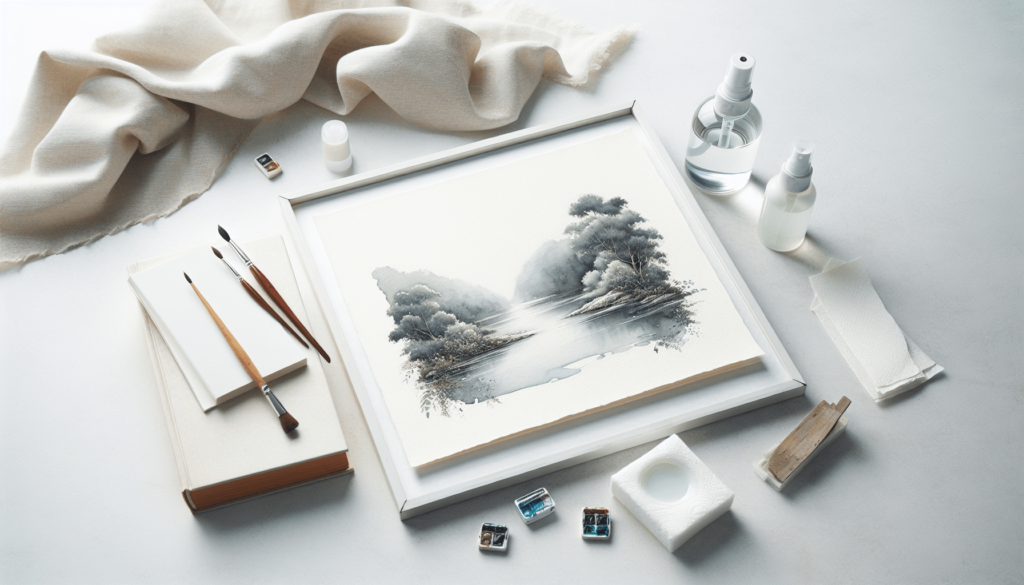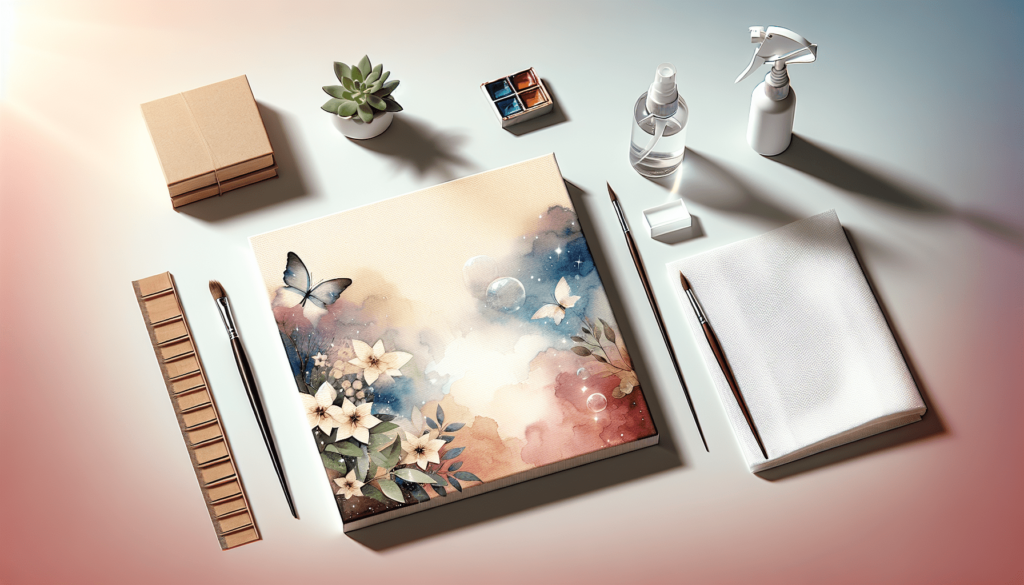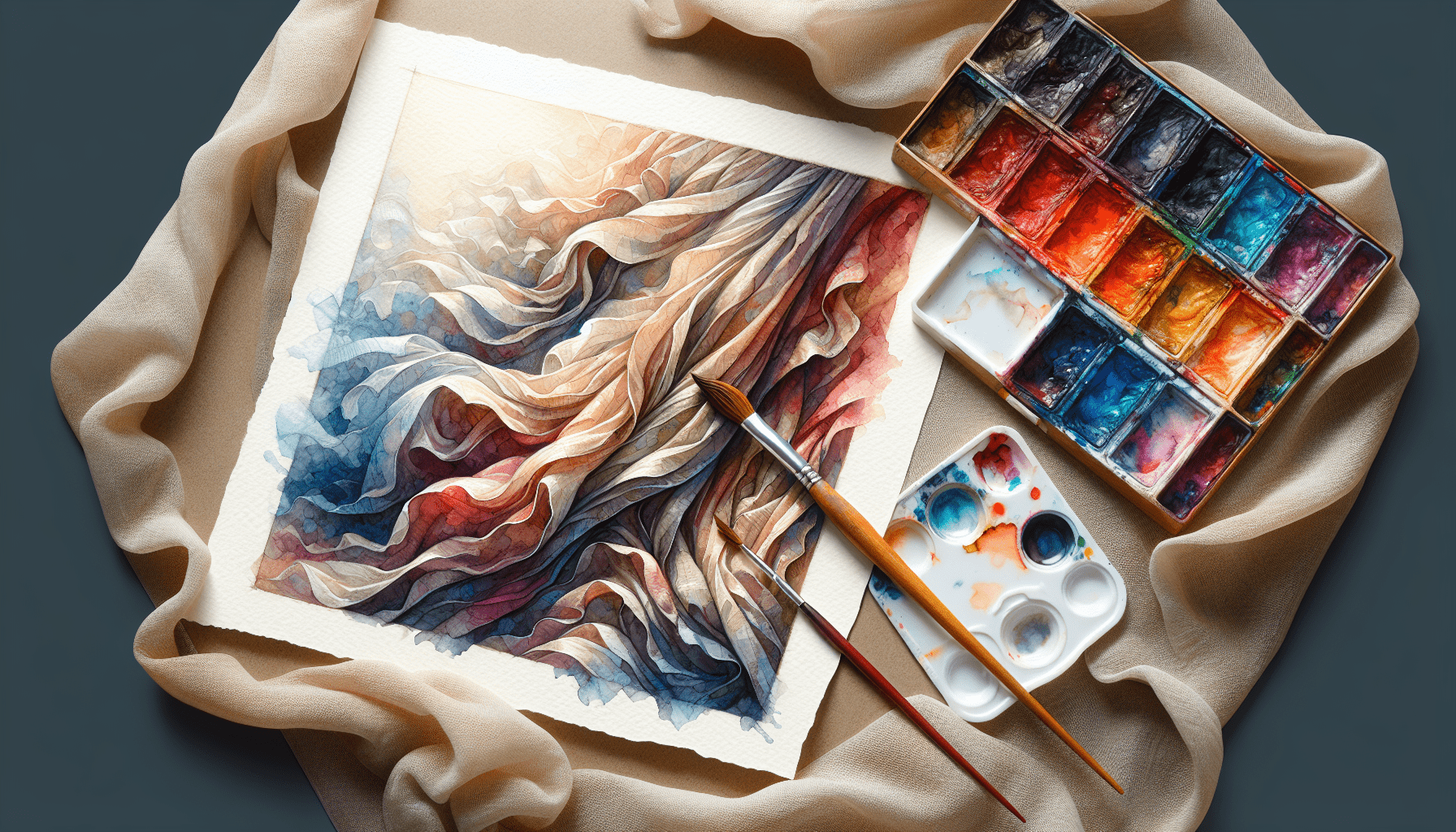Flattening watercolor paintings is an essential skill for artists who want to present their work in the most polished and professional manner. In “How To Flatten Watercolor Paintings,” you will discover step-by-step instructions on how to meticulously restore your paintings to a flat, pristine condition. The article guides you through several effective techniques, from gentle pressing to the use of moisture and weight, ensuring that the integrity and vibrance of your artwork are maintained. Whether you are a seasoned artist or a beginner, mastering the art of flattening watercolor paintings will significantly enhance the appearance and longevity of your work.
How to Flatten Watercolor Paintings
Have you ever struggled with the warping of your watercolor paintings after they have dried? This issue is common among artists due to the nature of watercolor paper and its interaction with water. Fortunately, flattening watercolor paintings is a manageable process that can restore your artwork to its best form. In this article, we will guide you through the steps, techniques, and tips required to flatten your watercolor paintings effectively.

Understanding Why Watercolor Paintings Warp
Watercolor paintings tend to warp because of the high water content involved in the painting process. When the paper absorbs water, it expands. As it dries, it contracts, often unevenly. This results in wavy or curled paper, which can be particularly frustrating if you wish to frame or sell your work.
Understanding the underlying causes of warping is the first step in effectively flattening your watercolor paintings. Here are some common reasons:
Quality of Paper
Different qualities and weights of paper react differently to water. Higher quality, heavier-weight papers (e.g., 300gsm or 140lb) are less prone to warping. Lighter-weight papers can buckle more noticeably.
Amount of Water Used
Using excessive water can cause more pronounced warping. Striking a balance between enough water to achieve desired effects and minimizing paper distortion is key.
Drying Conditions
The way your painting dries can influence the degree of warping. Uneven drying conditions, such as one side drying faster than the other, can lead to more severe buckling.
Materials Needed to Flatten Watercolor Paintings
Before you begin the flattening process, gather these essential materials:
- A clean, flat surface
- Absorbent paper towels or blotting paper
- A large, heavy book or several smaller ones
- Wax paper or plastic wrap
- A spray bottle filled with clean water
- Painter’s tape or masking tape (optional)
Step-by-Step Guide to Flattening Watercolor Paintings
Flattening watercolor paintings can be achieved through several methods. Below, we outline a step-by-step guide to one of the most effective techniques.
Initial Preparation
- Place the Painting on a Clean Surface: Lay your painting face down on a clean, flat surface to avoid any scratches or damage to the painted side.
- Cover with Absorbent Material: Place a layer of absorbent paper towels or blotting paper directly on the back of the painting. This will help manage moisture during the flattening process.
Lightly Moisten the Paper
- Spray the Back of the Painting: Using your spray bottle, lightly mist the back of the watercolor painting. Be careful not to over-wet it; a light mist is sufficient to make the paper pliable without causing additional warping.
- Cover with Wax Paper/Plastic Wrap: After spraying, place a sheet of wax paper or plastic wrap over the moistened area to protect it from sticking to the heavy book or weights you will use for flattening.
Press and Wait
- Place Heavy Books/Weights: Carefully position heavy books or weights on top of the wax paper/plastic wrap. Ensure that the weight covers the entire surface for even pressure distribution.
- Leave to Flatten: Allow your painting to sit under the weight for 24 to 48 hours. This waiting period ensures that the painting dries flat.
Final Check
- Remove Weights and Covers: After the waiting period, gently remove the weights, wax paper, and absorbent material.
- Inspect the Painting: Check your painting for any remaining warping. If the paper has not completely flattened, you may need to repeat the process.
Alternative Methods for Flattening
While the above technique is widely used, other methods can also be effective. Depending on the severity of the warping and the type of watercolor paper, one of these alternatives might be more suitable.
Using a Dry Iron
An iron set on a low setting can help flatten a warped painting. Here’s how:
- Prepare the Painting: Lay the painting face down on a clean, flat surface and cover the back with a clean cloth.
- Set the Iron: Use a dry iron (no steam) on the lowest heat setting.
- Iron the Back: Gently iron the cloth-covered back of the painting in smooth, even strokes. Check frequently to ensure the paper isn’t scorching.
Stretching the Painting
Stretching is another technique that not only flattens the painting but also prevents future warping:
- Soak the Painting: Submerge the entire painting in a tub of clean water for a few minutes to make the paper fully pliable.
- Attach to a Board: Using painter’s tape or masking tape, stretch the wet painting across a flat board. Secure the edges tightly.
- Allow to Dry: Let the painting dry completely in a balanced environment. The paper should dry flat and taut.
Below is a table to summarize the differences between methods:
| Method | Pros | Cons |
|---|---|---|
| Weight Pressing | Simple, effective | Time-consuming |
| Using a Dry Iron | Quick results | Risk of heat damage |
| Stretching | Adds stability, prevents future warping | Requires soaking, more materials |

Tips to Prevent Warping
An ounce of prevention is worth a pound of cure. Adopting these practices can help minimize warping from the start:
Choosing Quality Paper
Invest in high-quality, heavy-weight watercolor paper. These types are less prone to warping and often provide a better painting experience.
Controlling Water Usage
Be mindful of how much water you use. Practicing techniques such as wet-on-wet or wet-on-dry paints with control will prevent excessive saturation.
Proper Drying Techniques
Dry your paintings in a balanced environment. Placing your painting face up on a flat, absorptive surface can help reduce warping.
Conclusion
Flattening watercolor paintings may seem daunting, but with the right techniques and materials, you can achieve beautifully flat results. Whether you choose to use weight pressing, a dry iron, or stretching, each method offers an effective way to restore your artwork. Combine these techniques with preventive measures, and you’ll find that maintaining flat watercolor paintings becomes part of your successful artistic process.



